How Singer Crafts Some of the World’s Best Reimagined Porsche 911s

Later this month, Singer Vehicle Design will deliver its 300th Classic Study, a reimagined Porsche 964 Targa dubbed the Sotto Commission. Delivering the car to its owner marks a major milestone for Singer, as it takes place shortly after a consolidation of multiple production and development locations into a 115,000-square-foot facility in Torrance, Calif.
The Sotto Commission started life as a numbers-matching 911, as do all of Singer’s projects, and emerges after the restoration finished in Resistance Blue with ghosted side stripes. The almost understated exterior finish sparkles under certain lighting, while an interior trimmed in Orange leather with black contrast stitching hints at the performance potential that Singer reworked under the skin. In this case, the Sotto Commission’s owner chose to go with an air-cooled, 4.0-liter flat-six engine paired to a five-speed manual transaxle powering the rear wheels. A barking titanium exhaust system and carbon-ceramic brakes round out the major options.
More from Robb Report
Delta Is Using a Porsche 911 GT3 RS to Shuttle Travelers to Their Connecting Flights at LAX
This 1969 Porsche Raced in Steve McQueen's 'Le Mans' and Could Fetch $5.7 Million at Auction
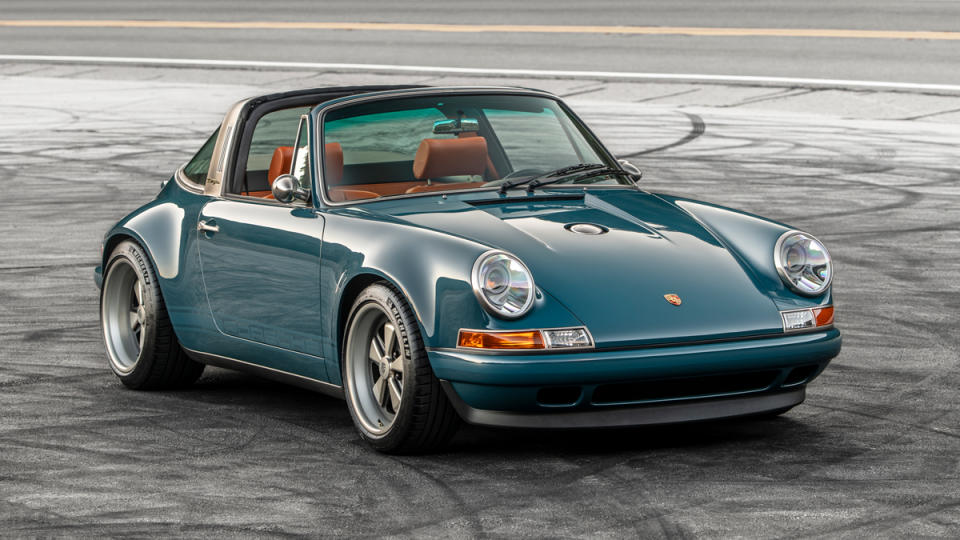
Of course, at Singer’s new facility, clients get a chance to spec almost every detail on their restored 911s. The building brings together seven formerly separate workshops, including four paint booths with eight bays, two entire rooms dedicated to sanding and finishing exterior panels, and of course, a massive workspace for hand-stitching leather and upholstery before final assembly of the drivetrain, suspension, and body begins.
At every station, Singer technicians perform a quality-control check—a process that, for example, helps maintain an almost unfathomably uniform 4 mm panel gap on every car’s individual seam. The facility values transparency, providing clients an opportunity to view any stage of the 4,000 labor-hours that each car receives.
“We encourage clients to visit whenever they can because it’s the best way to understand the attention to detail . . . and the best way to be inspired,” says Singer CEO Mazen Fawaz. “For most, it’s like walking into a candy shop . . . clients can walk through each stage of the restoration and talk to the people who will be working on their car.”
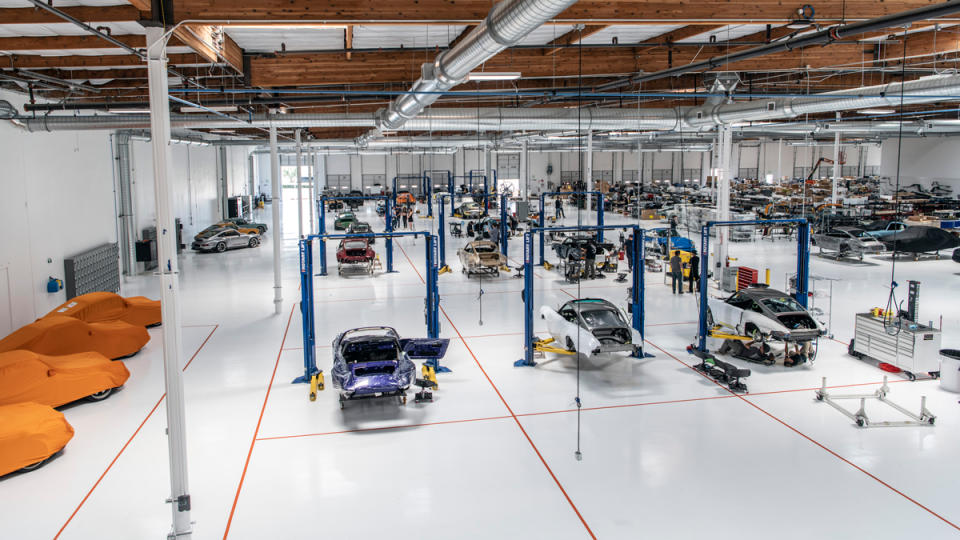
Founded in 2009 by Rob Dickinson, the former front man for popular 1990s band Catherine Wheel and a Porsche fanatic, Singer was originally based out of a small shop in Sun Valley, on the northeast side of Southern California’s San Fernando Valley. There, it established a sizable reputation that attracted patrons including Oscar-winner Frank Darabont, Formula 1 champion Jenson Button, and LeBron James’ agent Maverick Carter. As the restoration projects grew in scope and depth, Singer eventually needed to find a new home that could handle the increased demand.
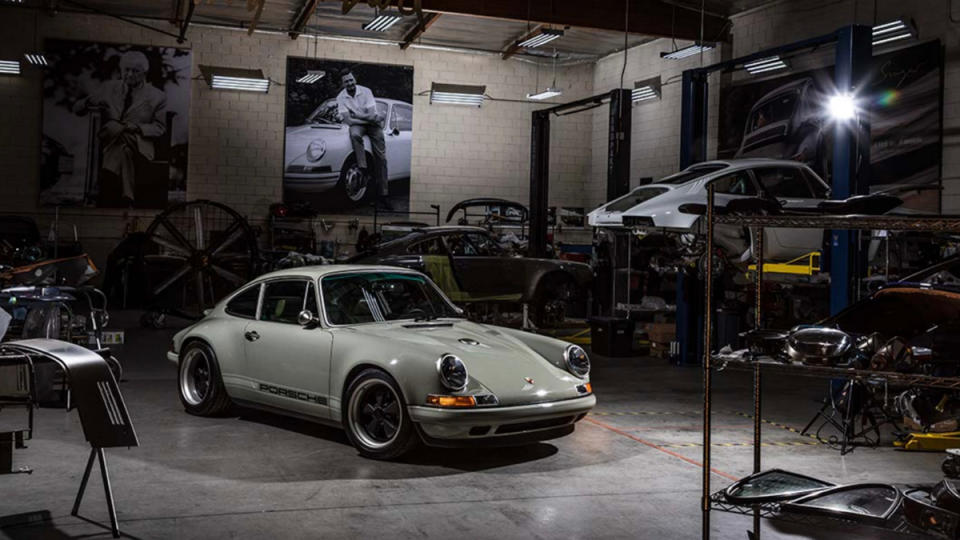
That demand is evident by the three years’ worth of full order rolls. The waitlist includes plans to reimagine only 450 examples by way of the Classic Study, in addition to the cap of only 75 examples that were given the Dynamics and Lightweighting Study treatment. There’s also a forthcoming DLS Turbo project, of which the test mule and first customer car are both currently underway. This year, Singer’s further expansion into a luxury lifestyle brand will include the addition of 200 timepieces, and a continued partnership with Hertz Team JOTA in motorsport, which will have Jenson Button behind the wheel in the World Endurance Championship Series. A line of ancillary accoutrements even includes custom-woven dog beds to match the finish of owners’ commissions.
“The experience of collaborating with Singer is every bit as important to us as the experience of driving the cars,” says Dickinson, now the executive chairman of Singer Group, Inc. “The journey with Singer doesn’t end when the owner’s car is restored. At this point, the focus shifts to the experiences that they might want to take part in with their car, so we run events like track days and owner drives to bring the community together.”
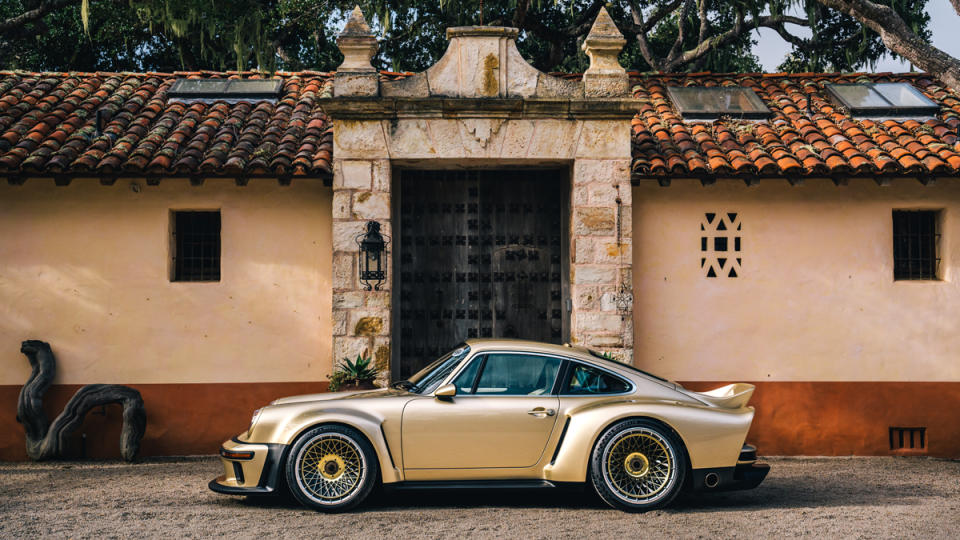
That level of engagement, and the long wait to actually acquire a 911 restoration by Singer, help to explain high auction and private-sale values. But it’s only after actually driving one of these commissions that it becomes clear how a once-small restoration shop has been so instrumental in creating an entire industry.
Snugged into carbon bucket seats in a tiny cockpit that somehow feels quite roomy, I soon realize that everything about the original 964-gen 911 clearly received a deft makeover. Singer boasts that each nut and bolt gets repainted, but more importantly than those hidden components, all the touchpoints that connect driver to machine reveal thoughtful attention to detail. The floor-hinging pedals don’t travel quite as far as a 964 when new, allowing for more precise modulation of the clutch, brake, and throttle while up and downshifting. The shifter lever’s almost holographic pattern glows from within a rounded knob that snugs perfectly between fingers and palm, and the power-assisted Momo steering wheel rotates with weighted precision.
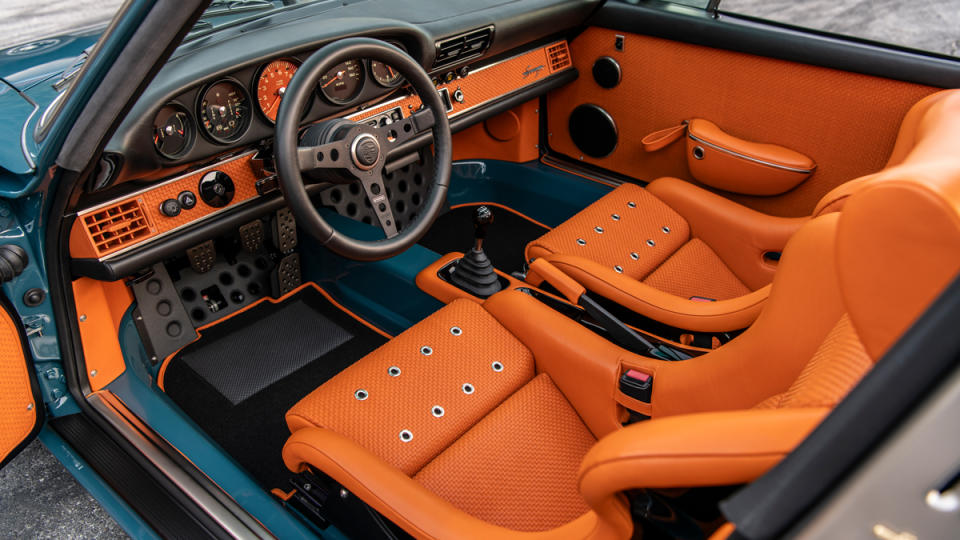
Once warmed up, the built 4.0-liter flat-six provides a serious bump in output over a stock 964’s 247 hp. But even in a 911 that now weighs around 2,500 pounds—thanks to the extensive application of carbon fiber—the power never gets overwhelming. Instead, revving up towards the 7,100 rpm redline provides plenty of low-end shove on the way to a screaming cacophony as the titanium exhaust begins to flow more freely.
Singer also offers a 3.8-liter version, but the 4.0-liter seemingly wants to rev forever. Luckily, it can’t, because then you would miss out on rowing up and down between gears. The shift throw remains slightly longer than most overly notched manuals on modern sports cars, but certainly tighter and more precise than stock. A lightened flywheel makes every throttle blip while heel-toeing a joy; even popping it into neutral unleashes a race-car-like chatter reminiscent of Ducatis equipped with a dry clutch.
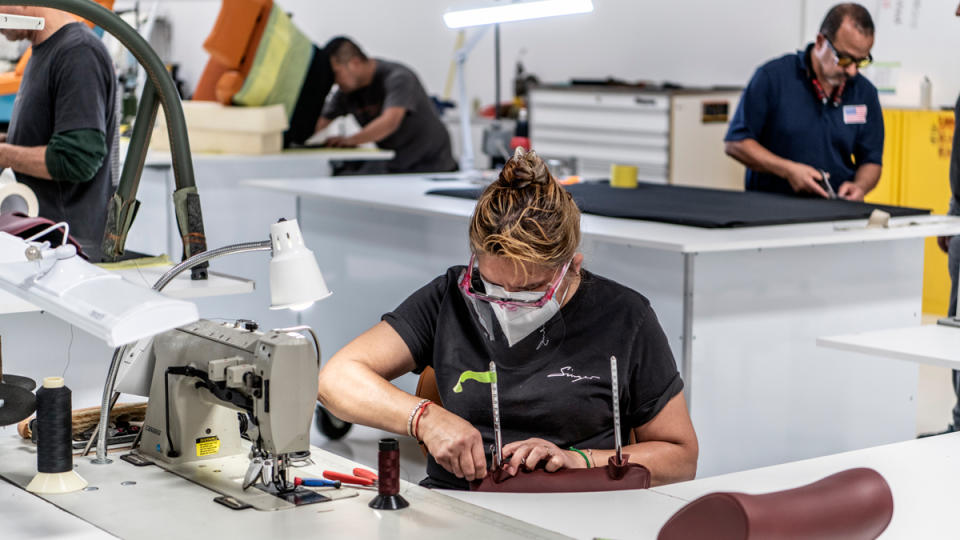
On a fast run through Palos Verdes, Singer’s suspension setup is not too firm for a comfortable stint on the 110 freeway, but the dampers allow just the right amount of body roll while hauling through corners. A bit of tire hum from the Michelin Pilot Sport 4S rubber barely eclipses the playful exhaust notes throughout the rev range, and traction-control programming from Bosch allows a healthy enough dose of tail-end squiggle out of corners to make any driver feel heroic.
Singer will equip Tiptronic transmissions upon customer request, and has even delivered a few all-wheel-drive cars. For buyers in California, the restorer also received an executive order from the California Air Resources Board (CARB) for an engine build that can pass smog testing when assembled with a non-adjustable intake plenum, a fuel-pressure regulator, and specific cams.
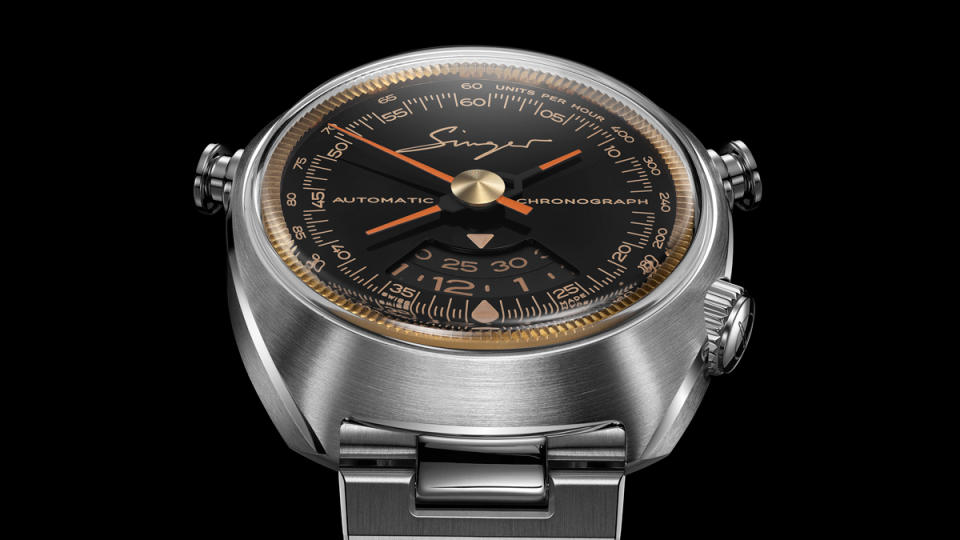
But the most important element that sets these reimagined 911s apart from the typical conception of a restored classic can easily go unnoticed: an impressive lack of creaks, clunks, or rattles. Each vehicle that gets customized undergoes hundreds of miles of testing to hunt down any potentially annoying noises, since few owners will want to crank up music through Apple CarPlay on the dash. After all, the flat-six’s symphony should take priority here.
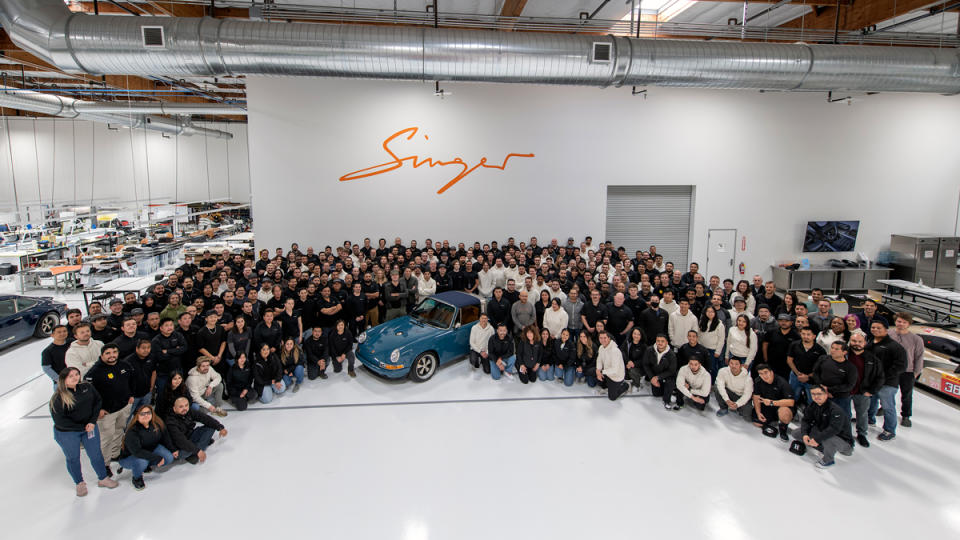
Akin to Apple products under Steve Jobs, where internal componentry never seen by consumers was treated with exhaustive attention, Singer’s white-glove approach is intended to redefine 911 restorations. And continued advancement is a must with restomod houses becoming ubiquitous. Fortunately, change is a constant and entropy does not seem to be an option for the team at Singer, and so what comes next in the story of reimagined Porsches remains a mystery.
Click here for more photos of Singer Vehicle Design and its reimagined Porsche 911 projects.
Best of Robb Report
Sign up for Robb Report's Newsletter. For the latest news, follow us on Facebook, Twitter, and Instagram.


